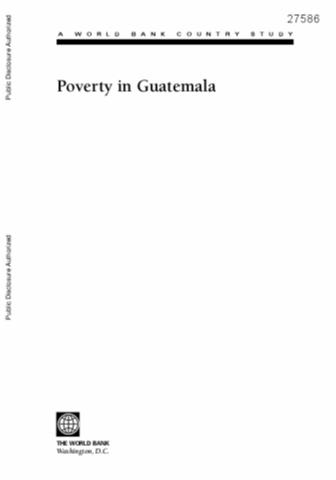Resource information
Poverty in Guatemala is high and deep. In 2000, over half of all Guatemalans lived in poverty. About 16 percent lived in extreme poverty. Available evidence suggests that poverty in Guatemala is higher than in other Central American countries. Although poverty has fallen over the past decade, its trend recently declined due to a series of economic shocks during 2001 and 2002. The drop of poverty incidence since 1990 is slightly slower than what would have been predicted given Guatemala's growth rates, suggesting that growth has not been particularly pro-poor. This pattern arises largely because growth in the rural sectors-where the poor are largely concentrated-has been slower than in other areas. Poverty and vulnerability are mainly chronic whereas only a fifth were transient poor. Likewise, while 64 percent of the population could be considered vulnerable to poverty, the majority of these are vulnerable due to low overall expected consumption rather than high volatility of consumption. The chronic nature of poverty and vulnerability highlights the importance of building the assets of the poor, rather than focusing primarily on the expansion of public safety nets or social insurance. Nonetheless, some public transfers (social assistance) could indeed be desirable to alleviate the poverty and suffering of the extreme poor, particularly when linked to participation in health and education activities. The Peace Accords represented a turning point for Guatemala's development path, paving the way for a transformation to a more prosperous and inclusive nation. Key areas related to economic development and poverty reduction include: a focus on human development, productive and sustainable development, modernization of the democratic state, and strengthening and promoting participation. The rights of the indigenous and women were also highlighted as cross-cutting themes throughout the accords, in an attempt to reverse the historical exclusion of these groups.


